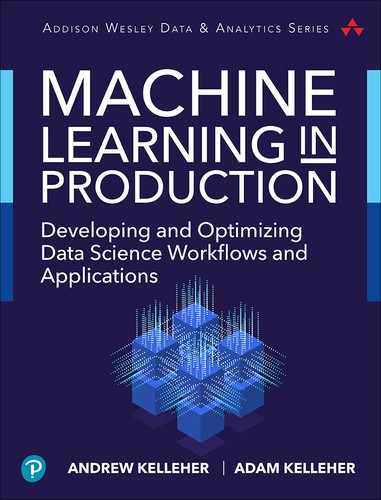II. Algorithms and Architectures
In this part, we cover algorithms and architectures. Specifically, we cover some of the basics to give you a feel for some of the elements of data infrastructure. And then we describe a basic process happening in this environment: model training.
Chapter 8, “Comparison,” covers a useful collection of metrics and ways to compute them: similarity metrics. These can be especially useful for simple content recommendations systems but are useful to have in your toolbox whatever your domain.
Chapter 9, “Regression,” describes supervised machine learning from the point of view of regression. The focus is less on the estimation error and more on the prediction and training problems. The chapter starts with linear regression and then moves to polynomial regression. It wraps up with random forest regression.
Chapter 10, “Classification and Clustering,” includes the basics of discrete supervised models (e.g., classification) and unsupervised machine learning. It covers several clustering algorithms, some of which are very scalable.
Chapter 11, “Bayesian Networks,” provides some preliminaries for understanding Bayesian networks and uses causal Bayesian networks to derive some intuition about them.
Chapter 12, “Dimensional Reduction and Latent Variable Models,” describes a few useful Bayesian models and provides examples of how to use them.
Chapter 13, “Causal Inference,” is a primer on understanding causal relationships and a good starting point for a deep and interesting field. Correlation does not imply causation. Machine learning is all about understanding correlative relationships.
Chapter 14, “Advanced Machine Learning,” is an overview of the trade-off between model capacity and overfitting. Neural network models in Keras demonstrate these concepts.
